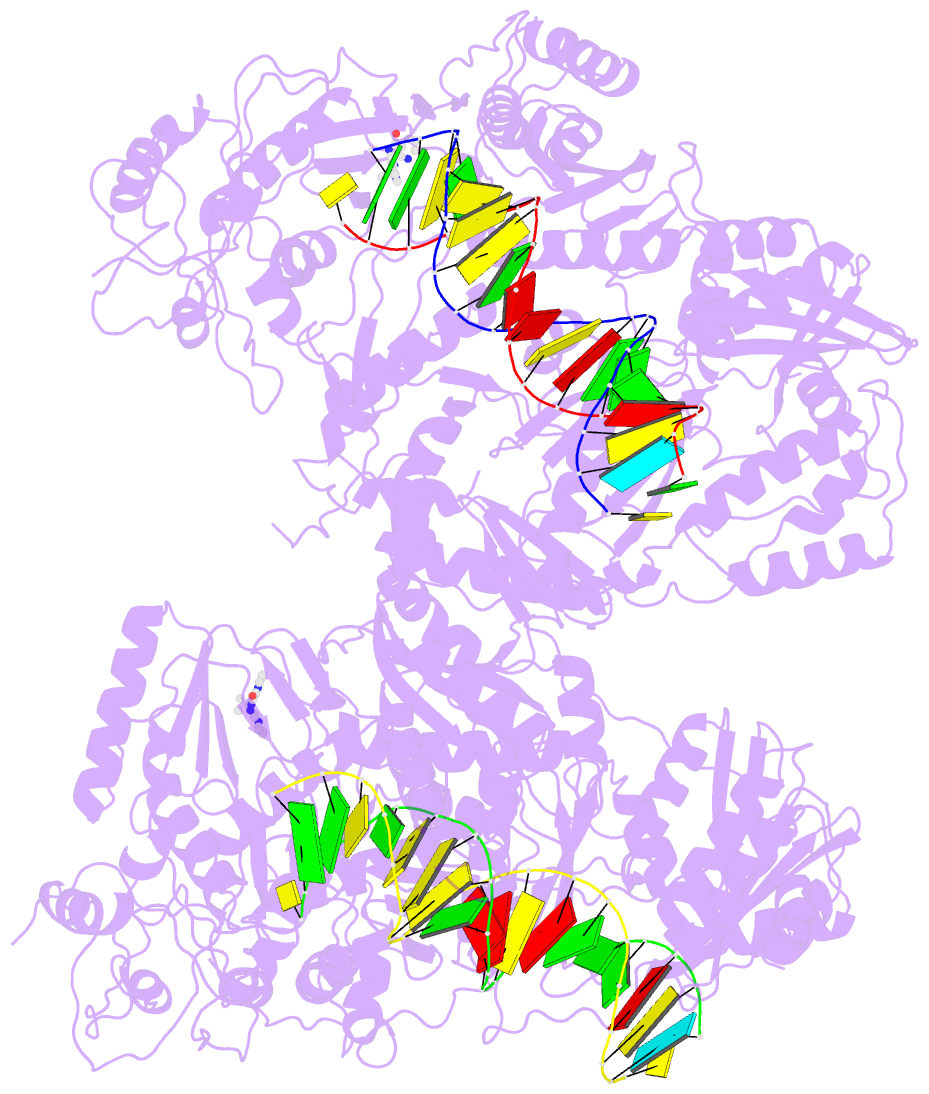Summary information and primary citation
- PDB-id
- 4puo; DSSR-derived features in text and JSON formats
- Class
- transferase, hydrolase-DNA-RNA-inhibitor
- Method
- X-ray (2.901 Å)
- Summary
- Crystal structure of hiv-1 reverse transcriptase in complex with RNA-DNA and nevirapine
- Reference
- Das K, Martinez SE, Bandwar RP, Arnold E (2014): "Structures of HIV-1 RT-RNA/DNA ternary complexes with dATP and nevirapine reveal conformational flexibility of RNA/DNA: insights into requirements for RNase H cleavage." Nucleic Acids Res., 42, 8125-8137. doi: 10.1093/nar/gku487.
- Abstract
- In synthesizing a double-stranded DNA from viral RNA, HIV-1 reverse transcriptase (RT) generates an RNA/DNA intermediate. RT also degrades the RNA strand and synthesizes the second DNA strand. The RNase H active site of RT functions as a nuclease to cleave the RNA strand; however, the structural basis for endonucleolytic cleavage of the RNA strand remains elusive. Here we report crystal structures of RT-RNA/DNA-dATP and RT-RNA/DNA-nevirapine (NVP) ternary complexes at 2.5 and 2.9 Å resolution, respectively. The polymerase region of RT-RNA/DNA-dATP complex resembles DNA/DNA ternary complexes apart from additional interactions of 2'-OH groups of the RNA strand. The conformation and binding of RNA/DNA deviates significantly after the seventh nucleotide versus a DNA/DNA substrate. Binding of NVP slides the RNA/DNA non-uniformly over RT, and the RNA strand moves closer to the RNase H active site. Two additional structures, one containing a gapped RNA and another a bulged RNA, reveal that conformational changes of an RNA/DNA and increased interactions with the RNase H domain, including the interaction of a 2'-OH with N474, help to position the RNA nearer to the active site. The structures and existing biochemical data suggest a nucleic acid conformation-induced mechanism for guiding cleavage of the RNA strand.





